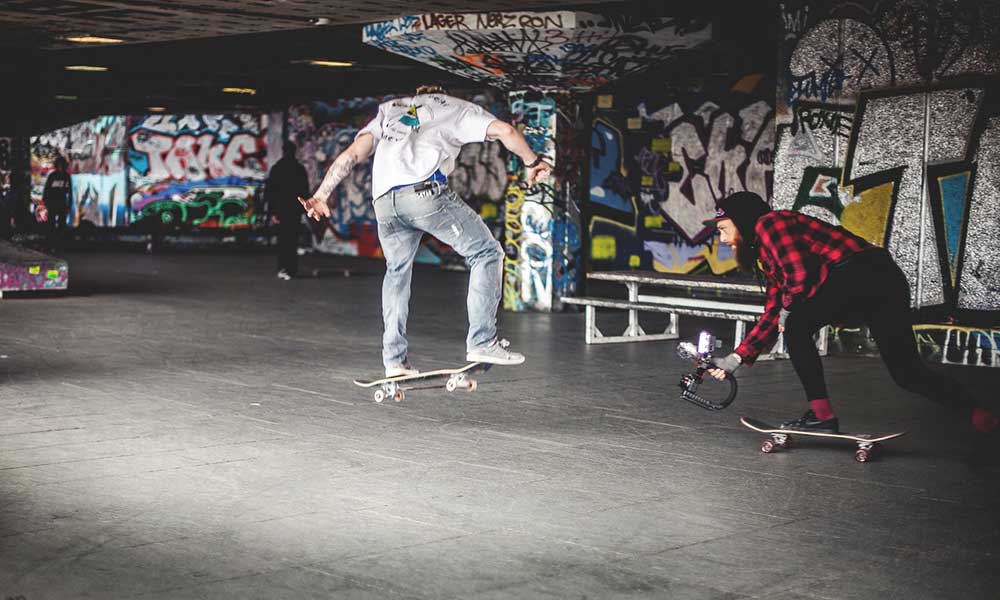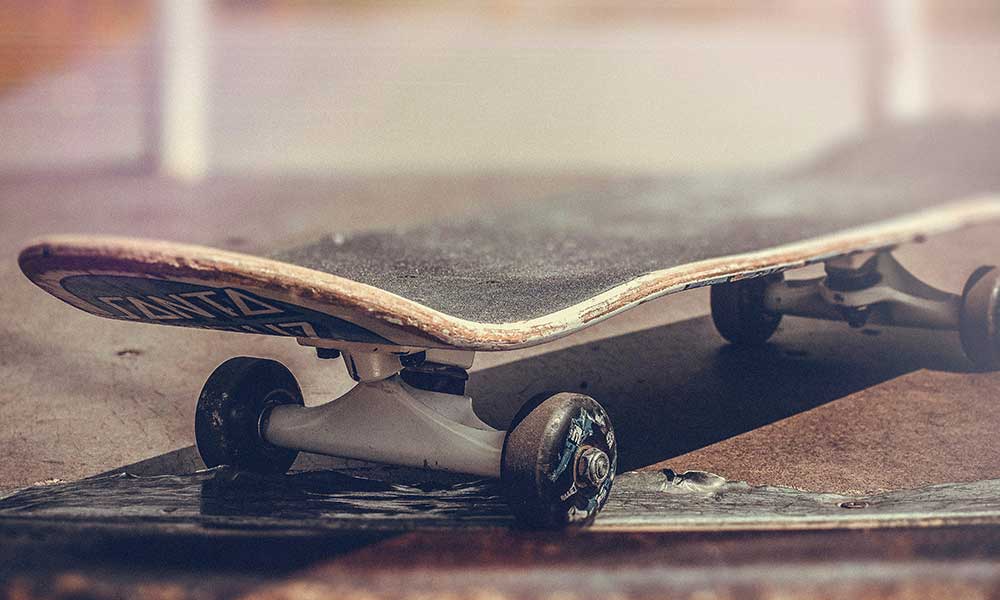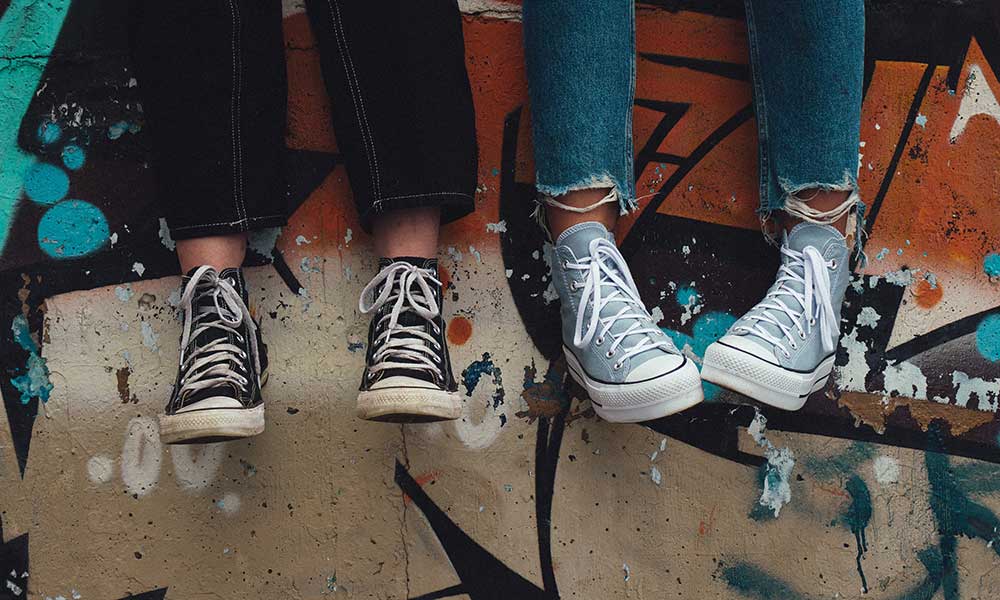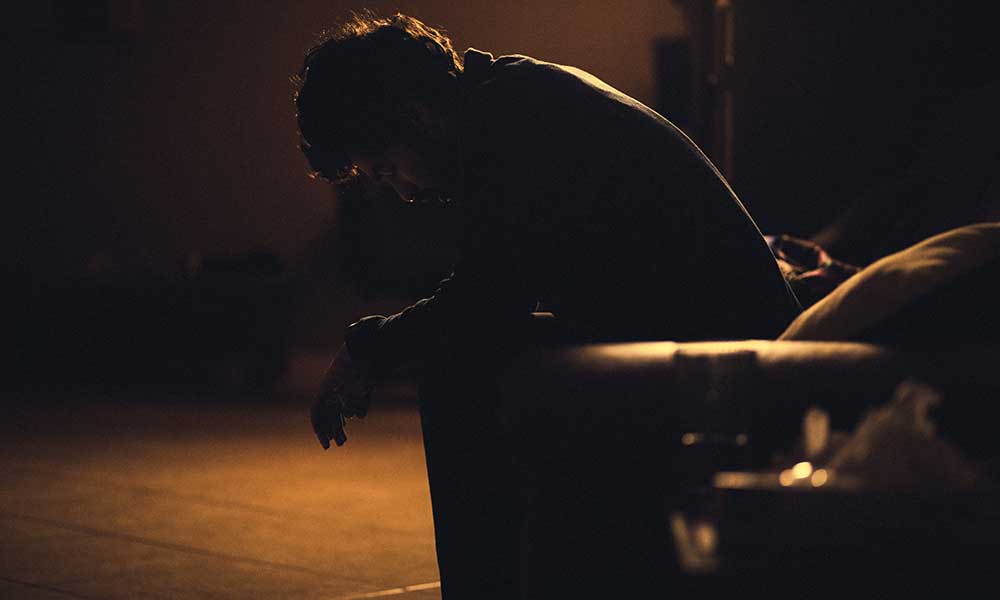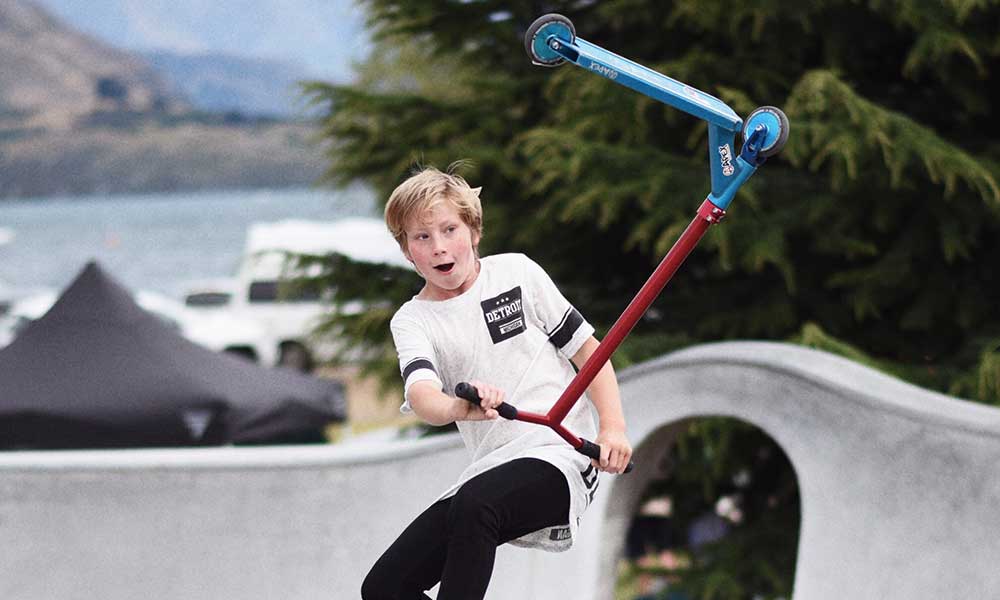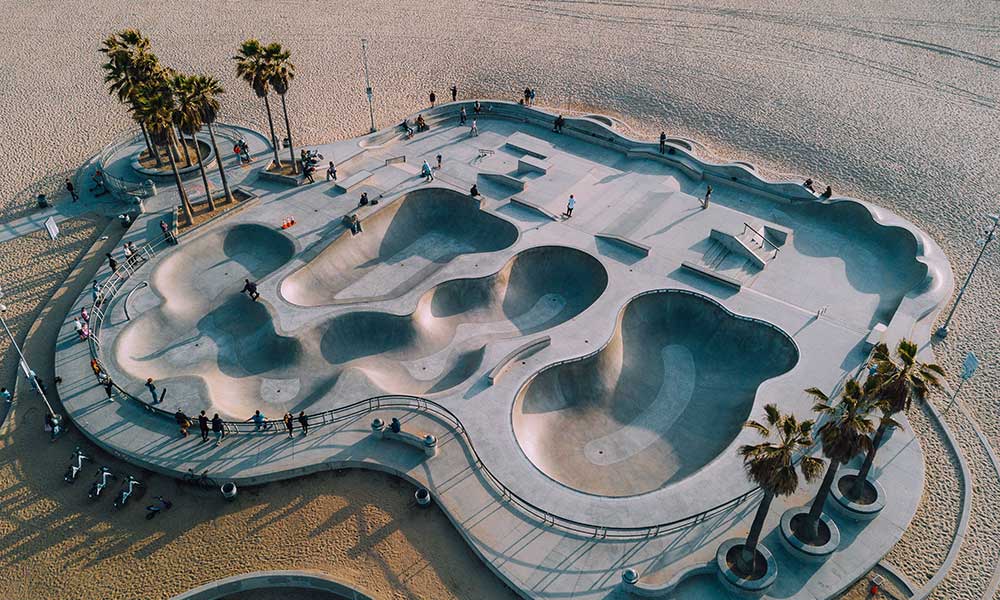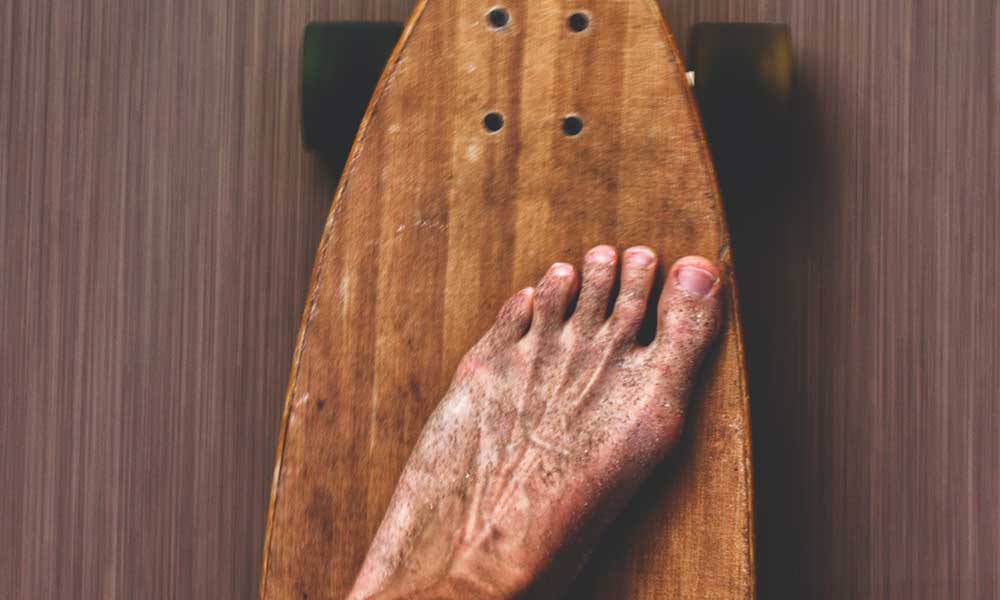The Grom Life is an independent publisher. You will not find paid product promotions or sponsored content on this site. You will find affiliate links which means we may earn a commission if you purchase through these links.
Whether you’re learning to ollie for the first time or making the step up to kickflips, it’s important to learn the lingo.
The more time you spend around fellow skateboarders, the more you will hear these terms.
So, to avoid confusion, check out this quick skateboard glossary that covers some of the most common—and the most unusual—skating terms.
Skateboard Parts Glossary
Before we look at some of the skating lingo that gets thrown around at skate parks, it’s important to know what the parts of the board (and the skate park) are actually called:
- Deck: The skateboard deck is the wooden board on which the rider stands.
- Tail: The tail of the board is the rear—the bit that pops off the ground when you ollie.
- Nose: The nose is the front of the board.
- Truck: The metal contraption that attaches the wheels to the deck. There are two trucks per board.
- Grip Tape: A sticky sandpaper-like attachment that is attached to the top of the deck. Grip tape increases the rider’s grip.
- Rail: The edges of the skateboard.
- Baseplate: A plate that has four holes in it and is used to attach the skateboard trucks to the skateboard deck.
- Line: The route that a skateboarder takes around a park or street course. It can include jumping a ramp or obstacle, grinding rails, and more.
- Kicker: A small ramp used to launch. Kickers are often transportable and can be moved around to help the skater find the best line.
- Bowl: A bowl-shaped jump based on swimming pool designs.
- Handrail: A metal rail that runs down a set of stairs and is used to perform grinds.
- Half Pipe: A common ramp that has a U-shape.
Skateboard Lingo Glossary
Once you can recognize the parts of a skateboard and skate park, it’s time to decipher some of the terms that your fellow skaters will be using.
- ABD: An abbreviation that stands for “already been done”.
- Frontside: When a skater performs a trick with their front facing the ramp or obstacle.
- Backside: When a skater performs a trick with their back facing the ramp or obstacle.
- Durometer: A measurement used to determine the hardness and durability of wheels. All skateboard wheels have a durometer reading.
- Face Plant: When you fall off the board and land face-first.
- 180 to 1080: A 180 so-named because the skater turns 180 degrees. It can be performed either frontside or backside. The terms “360”, “540”, “720”, “900”, and “1080”, are also used in the same context to describe different revolutions.
- Bail: When you jump off the board as soon as the trick goes wrong.
- Grind: A trick performed by grinding the board on an obstacle such as a rail.
- Crooked Grind: A grind where the deck is not directly over the rail.
- Kickflip: A popular trick that was invented by Rodney Mullen and involves kicking the body in the air so that it rotates.
- Regular Footer: A regular footer has a dominant right foot and rides with their left foot forward (right foot toward the tail of the board, left foot closer to the nose).
- Goofy Footer: A goofy footer has a dominant left foot and rides with their right foot forward (left foot toward the tail of the board, right foot closer to the nose).
- Stoked: A synonym for “delighted” or “excited”.
- Switch Stance: Using the opposite stance to ride and perform tricks.
- Street Skating: Skateboarding on the street using obstacles like curbs, benches, and hydrants to perform tricks.
- Sesh: Short for “session” and often used in the context of a “skateboarding session”.
- Vert: When the board goes vertical to get some air. “Vert” is short for “vertical” and “vert skating” refers to a style that’s all about using vert ramps to gain big air and perform big tricks. Tony Hawk is one of the best-known vert skaters.
- Riding Fakie: Riding a skateboard backward.
- Complete Skateboard: A complete skateboard is one that is sold with all of its parts.
- Wipeout: A term that is more commonly associated with surfing and means that you completely lose control and fall off the board.
- Ollie: One of the most fundamental tricks in skateboarding, the ollie allows the skater to get some air without using a ramp or obstacle.
- Sk8: One of the most common skateboarding terms, sk8 is simply an abbreviated way of saying “skate”.
- Thrasher: An avid skater.
- Riding Mongo: Skateboarders traditionally push with their back foot, which is also their dominant foot. Riding mongo is the exception and entails pushing with the front foot.
- Land: When you successfully complete a trick.
- Mob: When you have bad style.

